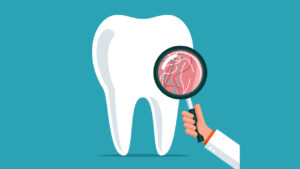Why Is Dental Work So Expensive Even With Insurance?

Dental work can be surprisingly costly, even for those with insurance. The reasons for this are multifaceted, involving the structure of the dental industry, the nature of dental insurance, the high costs associated with dental practices, and the overall economic landscape. Let’s dive into these aspects to understand why dental expenses can be so high.
1. Nature of Dental Insurance
Dental insurance operates differently from medical insurance. Most dental plans are designed to cover basic preventive care, such as cleanings, exams, and X-rays, but they provide limited coverage for more extensive procedures. Typically, dental insurance plans have an annual maximum benefit, often ranging from $1,000 to $1,500. Once this cap is reached, any additional costs must be paid out-of-pocket by the patient.
Unlike health insurance, which is designed to cover large, unpredictable expenses, dental insurance is more akin to a benefits program. It’s intended to provide some assistance with costs, but not to cover them entirely. This limited coverage can quickly be exhausted by more costly procedures like root canals, crowns, or orthodontics, leaving patients to shoulder the remaining expenses.
2. High Costs of Running a Dental Practice
Operating a dental practice involves significant overhead costs. These include:
- Equipment and Technology: Dental equipment and technology are incredibly advanced and continually evolving. High-quality imaging machines, sterilization units, dental chairs, and specialized tools are expensive to purchase and maintain.
- Materials: The materials used in dental procedures, such as crowns, bridges, fillings, and implants, are often costly. Dentists typically use high-quality materials to ensure the best outcomes for their patients, which adds to the overall cost.
- Labor Costs: Dental practices require skilled personnel. Dental hygienists, assistants, receptionists, and lab technicians are all vital to the operation of a practice. Competitive salaries and benefits for these employees contribute to the high operating costs.
- Practice Overheads: Rent or mortgage payments for office space, utilities, insurance, and other administrative expenses also add up.
3. Education and Training
Dentists undergo extensive education and training, often incurring substantial student loan debt. After earning an undergraduate degree, aspiring dentists must complete four years of dental school, which can cost hundreds of thousands of dollars. In addition, many dentists pursue further specialization, requiring additional years of training and education.
This high level of education and training is necessary to ensure that dentists are well-prepared to provide high-quality care. However, the associated costs are often passed on to patients to help dentists manage their educational debts and ongoing professional development.
4. Limited Reimbursement Rates
Insurance companies often negotiate lower reimbursement rates with dental practices, which can lead to a situation where the amount reimbursed for a procedure does not fully cover the dentist’s costs. To make up for this shortfall, dental practices may charge higher rates to patients paying out-of-pocket or whose insurance does not cover the full cost.
5. Complexity of Procedures
Dental procedures can vary greatly in complexity. Simple cleanings and fillings might be relatively inexpensive, but more complex procedures like root canals, crowns, and orthodontic treatments require significant time, expertise, and resources. These procedures often involve multiple visits, specialized equipment, and custom-made materials, all of which contribute to higher costs.
6. Preventive Focus of Dental Care
Dental care is preventive by nature, aiming to catch and address issues before they become more serious (and more expensive) problems. While preventive care can reduce long-term costs, it does require regular check-ups and treatments, which can add up over time. Insurance plans typically cover preventive care quite well, but the cumulative cost of these regular visits can still be significant.
7. Market Dynamics
In some areas, the cost of dental care is influenced by market dynamics, including supply and demand. In regions with fewer dentists, competition is lower, and prices may be higher. Conversely, in areas with many dental practices, competitive pressures might help to keep prices in check, though this is not always the case.
8. Lack of Comprehensive Public Dental Programs
Unlike some countries with comprehensive public health systems that include dental care, the United States does not have a robust public dental program for all citizens. Medicare, for instance, does not cover most dental care, and Medicaid provides limited coverage, primarily for children and low-income adults. This lack of a broad public dental program means many individuals must rely on private insurance or pay out-of-pocket, contributing to the overall perception of dental care being expensive.
Conclusion
The high cost of dental work, even with insurance, is the result of a combination of factors. Dental insurance provides limited coverage and often has low annual maximums, leaving patients to cover significant portions of their bills. The high operating costs of dental practices, extensive education and training requirements for dentists, and the complexity of many dental procedures also contribute to the overall expense. Additionally, the market dynamics and lack of comprehensive public dental care programs play a role in driving costs up. Understanding these factors can help patients better navigate their dental care options and plan for associated expenses.